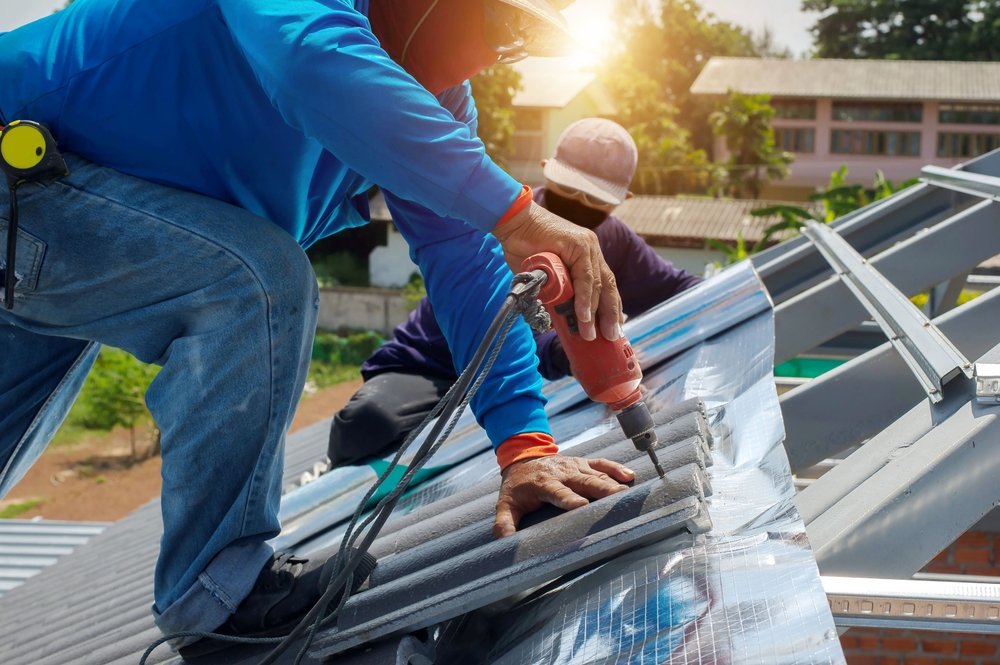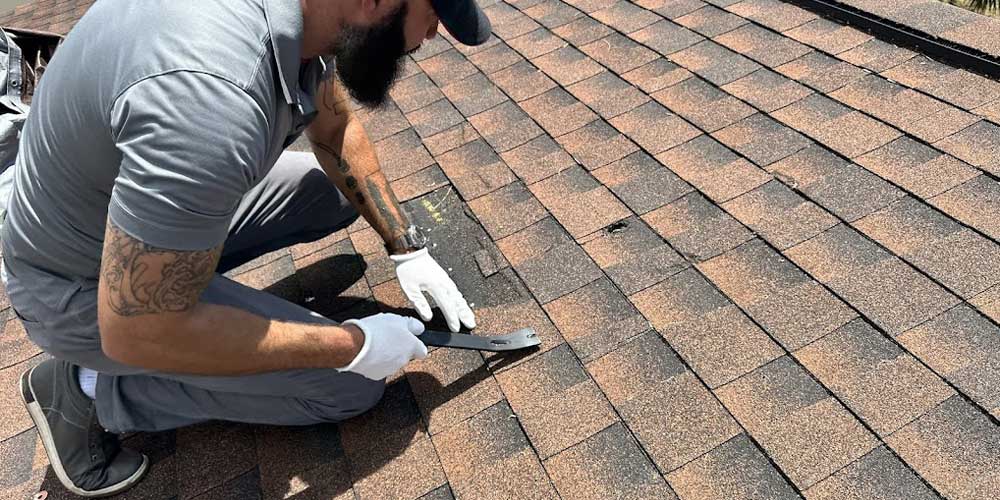Discovering the Various Kinds of Roof Coverings: Which One Is Finest for Your Home?
When taking into consideration the myriad types of roofings available, it is important to review how each alternative lines up with your home's unique requirements, consisting of environment problems, visual choices, and structural performance. From the timeless gable roofing system that successfully networks rainwater to the modern flat roof covering offering urban adaptability, each style provides distinctive benefits and challenges. Additionally, the option might dramatically influence long-term maintenance and power performance. As you ponder the most effective fit for your residence, it is necessary to evaluate these aspects meticulously, specifically as some alternatives might surprise you with their potential benefits.
Saddleback Roof
Gable roofings, defined by their triangular shape and sloping sides, are a popular selection among property owners seeking both visual charm and functionality. This roof design efficiently allows for reliable water overflow, decreasing the threat of water merging and subsequent damages. Furthermore, the high inclines create enough attic room, which can be used for storage or perhaps converted right into living areas.
Among the main benefits of gable roofings is their ability to hold up against severe climate condition. The design assists in minimizing wind resistance, making them specifically suitable for locations prone to tornados. Furthermore, gable roofings can be constructed utilizing a variety of materials, consisting of shingles, floor tiles, and metal, supplying homeowners with versatility in layout and budget.
From an architectural point of view, gable roofings can boost the aesthetic allure of a home, supplying a timeless and classic look. In general, gable roofing systems stay a preferred choice due to their balance of functionality and style, appealing to a broad range of property owners.
Flat Roofs
While frequently neglected in favor of more traditional roof designs, level roofings use special advantages that deal with specific building demands and contemporary style preferences. These roofs are identified by their marginal pitch, enabling for efficient use room, especially in metropolitan environments where taking full advantage of square footage is essential.
One substantial advantage of flat roof coverings is their adaptability. They can be used as additional living rooms, such as rooftop gardens, patio areas, or solar panel installments, improving the functionality of a home. In addition, level roofs are commonly much easier and safer to browse during upkeep, helping with repairs and assessments without the difficulties posed by steep inclines.
Flat roof coverings can likewise be extra economical in regards to materials and installment. With a simpler layout, they frequently call for fewer resources, converting into reduced labor prices. Nevertheless, it's critical to think about water drainage and waterproofing, as flat roofings can be vulnerable to pooling water if not adequately developed.

Hip Roofings
Hip roof coverings stand out for their stylish style and architectural honesty, making them a popular choice among house owners. Identified by inclines on all 4 sides, hip roofs offer a well-balanced aesthetic that matches different building designs - roof repair oahu. The balanced nature of these roof coverings aids to disperse weight equally, boosting security and durability
One of the key advantages of hip roofs is their ability to endure severe climate condition. The sloped surfaces facilitate efficient water drain and snow drainage, lowering the threat of leakages and structural damage. Additionally, the design decreases wind resistance, making hip roof coverings much less prone to wind uplift compared to other roof kinds.


Dropped Roofs
Dropped roofs, as opposed to the complexity of hip roofings, view it now provide a minimal and structured design that interest modern aesthetics. Defined by a solitary sloping surface, dropped roofs are typically made use of in contemporary design, yard sheds, and other practical frameworks. This simplicity not only improves aesthetic appeal however additionally you could check here allows for effective water drainage, making them suitable for various environments.
One of the main benefits of shed roof coverings is their cost-effectiveness. With less products called for and a straightforward installation process, property owners can save both money and time. The style likewise allows the consolidation of big home windows or skylights, advertising natural light and producing large insides.
Nevertheless, it is vital to take into consideration the possible downsides, consisting of restricted insulation choices and the requirement for cautious design to avoid excessive heat build-up. In addition, lost roofings might not blend perfectly with traditional architecture, which can be a problem for some house owners.
Eventually, dropped roofs present a sensible and fashionable roofing solution for those looking for modernity and effectiveness. When selecting a roof kind, assessing personal visual preferences and functional needs will certainly assist property owners to the most effective selection for their distinct demands.
Mansard Roofings
Mansard roofing systems, identified by their unique four-sided design, are a characteristic of French architecture that incorporates beauty with functionality. This building style includes two inclines on each side, with the lower slope being steeper than the top one. The distinct arrangement permits added living area in the top levels, making it an excellent option for home owners seeking to make best use of functional location without expanding the building's impact.
One of the considerable benefits of a mansard roofing system is its convenience. It can be adapted to different building designs, from conventional to modern-day, boosting the aesthetic appeal of any type of home. In addition, the ample area developed under the roof can quickly fit dormer home windows, which allow for natural light and ventilation, additional boosting the convenience of the living area.
Nevertheless, potential property owners ought to consider the maintenance requirements linked with mansard roof coverings. Installment prices may be higher compared to less complex roof covering styles due to the complexity of construction.
Conclusion
In conclusion, the option of a proper roof covering type pivots on private requirements, climate factors to consider, and aesthetic preferences. Each roofing style presents unique benefits, such as the effectiveness of gable roofing systems, the contemporary appeal of shed roofs, and the security of hip roofing systems. Furthermore, level roofing systems offer usefulness for urban settings, while mansard roofings provide added living area regardless of greater installation expenses. Ultimately, a thorough examination of these elements will certainly direct home owners in making a notified choice.
From the traditional gable roof covering that efficiently channels rain to the modern-day level roofing system offering metropolitan flexibility, each design presents unique benefits and obstacles (roof repair oahu). In addition, the design reduces wind resistance, making hip roofings much less susceptible to wind uplift compared to other roofing system types
Dropped roof coverings, in comparison to the complexity of hip roofing systems, provide a structured and minimal layout that allures to modern-day aesthetics. Each roofing style presents distinct advantages, such as the efficiency of gable roofing systems, the contemporary charm of shed roofing systems, and the stability of hip roofing systems. Flat roofing systems her response provide practicality for urban environments, while mansard roofs provide additional living room regardless of greater setup expenses.